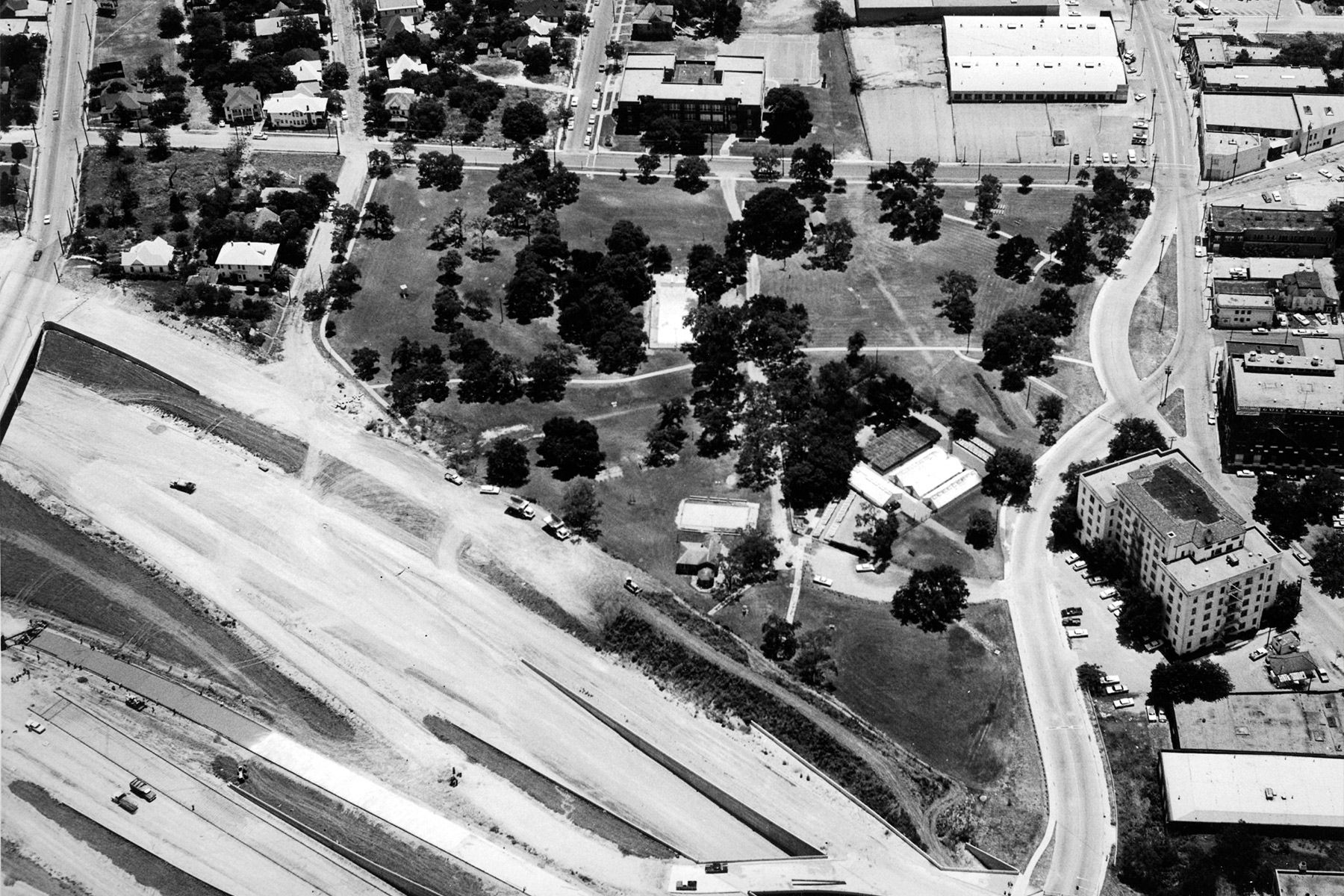Editor’s Note: This is a companion piece to our November cover story, “The Fair Park Lie.” While the piece below stands alone, it is intended to expand on the themes within the larger story. Read it here.
The city of Dallas has a long history of taking land from Black communities. Here are just a few examples.
Between 1947 and 1956, the construction of Central Expressway eradicated somewhere around 500 houses and businesses in four Black communities: North Dallas, also known as Short North Dallas (now Uptown); Deep Ellum; Stringtown, a thin neighborhood connecting the previous two areas; and Bonton. (Later, in 1973, I-345 would be built through parts of the same area.)
Beginning in 1950, using federal flood-control money, the city annexed West Dallas and seized Black-owned homes along the Trinity River bottoms.
Between 1953 and 1955, the expansion of Love Field took over a portion of Elm Thicket containing more than 300 Black-owned houses and businesses.
Just a few months later, in December 1955, work began on the South R.L. Thornton Freeway, clearing another 175 Black-owned houses and more businesses in the Tenth Street neighborhood in Oak Cliff. In January 1956, the city took its first bite from the area around Fair Park.
Construction began on the Woodall Rodgers Freeway in 1958. It wouldn’t open until 1983, because of various design and financing issues, but the damage had long since been done: another 200 homes taken in North Dallas, many of them shotgun houses rented by poor Black families.
Then Bonton was hit again, too. The C.F. Hawn Freeway—connecting Dallas and Kaufman—broke ground in 1960, after hundreds of Black-owned houses had been cleared.
Displacing people of color was such an inevitability that even private developers were able to use it to their advantage. In 1962, the 200 residents of Little Egypt, a former freedmen’s town in what is now Lake Highlands, sold their land simultaneously and moved away en masse. Why fight it? The 30-acre community, formed almost 100 years earlier around Egypt Chapel Baptist Church, vanished as soon as they did.






